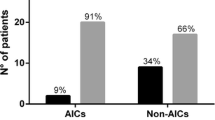Abstract.
Background: Infection continues to be one of the major complications of cerebro-spinal fluid shunting procedures. Recent insights in the pathophysiological mechanism of these foreign body infections have elucidated the difficulty of achieving successful treatment without device removal. The development of a rifampin-impregnated silicone catheter yielded excellent results in infection prevention and treatment in vitro as well as in an animal model.
Patients and Methods: Here, we describe the application of this device in two patients with a complicated course of shunt infection.
Results: In one patient the rifampin-impregnated shunt system was implanted after external drainage to prevent further infection. The shunt infection of the second patient was treated by replacement of the infected shunt system with a rifampin-impregnated device. Both patients recovered immediately without any signs of adverse effects and the two shunt systems have now been working properly for more than 36 and 21 months, respectively.
Conclusion: These results suggest that rifampinimpregnated silicone catheters could become a valuable tool in the treatment and prevention of shunt infections.
Similar content being viewed by others
Author information
Authors and Affiliations
Additional information
Received: July 30, 2001 · Revision accepted: December 1, 2002
J. A. Hampl (corresponding author)
Rights and permissions
About this article
Cite this article
Hampl, J., Weitzel, A., Bonk, C. et al. Rifampin-Impregnated Silicone Catheters: A Potential Tool for Prevention and Treatment of CSF Shunt Infections. Infection 31, 109–111 (2003). https://doi.org/10.1007/s15010-002-2113-2
Issue Date:
DOI: https://doi.org/10.1007/s15010-002-2113-2




